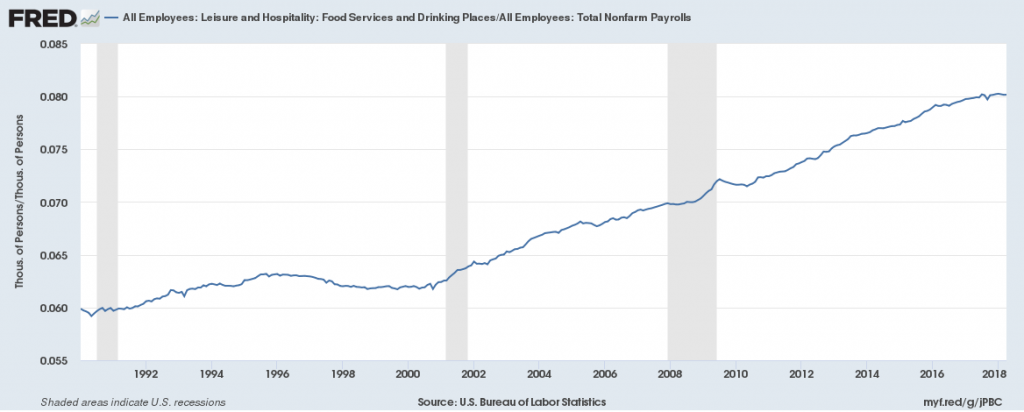May 13. Clear Sailing Ahead
In the early part of March, prior to the March 21 FOMC meeting, 5/30 treasury spread was around 50 bps. Following that meeting it’s been in a fairly steady decline, closing at a new low Friday of just over 27 bps. We’re now one month away from the June FOMC meeting, which is fully priced for a hike. Is it reasonable to assume, in the wake of the June meeting, that another 25 bps will be extracted from 5/30, which will put it around zero by midsummer?
The Fed has wanted to tighten financial conditions. A relatively soft dollar, tight corporate spreads, and tame long end rates paired with low implied vols suggests that the current round of tightening hasn’t had much bite. Even equities, though a bit more volatile, are nearly unchanged from the start of the year. Where conditions ARE tightening is in emerging markets, for various reasons. However, Powell’s speech last week more or less dismisses the US influence on Emerging Mkts, noting that the Fed has been transparent in communicating intentions.
Last week long end yields barely moved in spite of new highs in crude oil. The inflation data were slightly lower than expected, allowing the market a sigh of relief, and new long dated supply was absorbed with the same ease that Rosie uses a Bounty paper towel to wipe up spilled coffee on the deli counter.
Regarding the June FOMC, Jim O’Sullivan, Chief US Economist of High Frequency Economics and Forecaster of the Year in 2017, says that language in the statement may be tweaked as soon as June to reflect a need to upgrade the stance of FF to neutral from accommodative. He mentioned the March FOMC minutes, and below is an excerpt which makes the case:
Several participants expressed the judgment that it would likely become appropriate at some point for the Committee to set the federal funds rate above its longer-run normal value for a time. Some participants suggested that, at some point, it might become necessary to revise statement language to acknowledge that, in pursuit of the Committee’s statutory mandate and consistent with the median of participants’ policy rate projections in the SEP, monetary policy eventually would likely gradually move from an accommodative stance to being a neutral or restraining factor for economic activity. However, participants expressed a range of views on the amount of policy tightening that would likely be required over the medium term to achieve the Committee’s goals.
By the way, between now and the next FOMC there is another payroll report on 1-June. If there’s a possible catalyst for higher yields, it may be the Average Hourly Wage data which now seems to be the last missing puzzle piece. On the other hand, just for fun I created the chart below. (I guess I’m not the only one that supports the local bartender). It’s a bit hard to see the scale, but since the year 2000, the percentage of people employed in Leisure and Hospitality, Food Service and Drinking Places has gone from 6.2% to 8% of payrolls. Good times. As Wayne Campbell says, “I’ve had plenty of ‘Joe’ jobs. Nothing I’d call a career. Let me put it this way, I have an extensive collection of name tags and hairnets.”
Of course, robots are now taking those jobs, which may hold wages down. On the other hand every time I see a creepy demo video from Boston Dynamics I think of the good part: these kids won’t need to go into battle. Just strap a laser on Fido here and you’ve got a heck of a fighting force. Might as well just buy the stocks of gaming companies. They’re the ones with the technical know-how and hacking skills that will be at the core of future conflicts.
https://www.youtube.com/watch?v=Ve9kWX_KXus
One last brief thought on EM. Argentina quickly disintegrated from successfully selling 100-year dollar denominated bonds to getting an IMF bailout. US corporates continue to buy back their own shares, and while some finance buy backs out of operating cash, others borrow, diluting balance sheets. In any case, corporate debt is at a record of GDP, over 45% and above previous peaks in 2001 and 2009. When rates rise, the flame-out can occur fast, but it’s not here yet.
| 5/4/2018 | 5/11/2018 | chg | |
| UST 2Y | 249.7 | 253.5 | 3.8 |
| UST 5Y | 278.0 | 283.7 | 5.7 |
| UST 10Y | 294.4 | 297.0 | 2.6 |
| UST 30Y | 311.4 | 311.0 | -0.4 |
| GERM 2Y | -58.0 | -58.1 | -0.1 |
| GERM 10Y | 54.4 | 55.9 | 1.5 |
| JPN 30Y | 72.7 | 73.9 | 1.2 |
| EURO$ Z8/Z9 | 32.5 | 35.5 | 3.0 |
| EURO$ Z9/Z0 | 5.5 | 7.0 | 1.5 |
| EUR | 119.63 | 119.42 | -0.21 |
| CRUDE (1st cont) | 69.72 | 70.70 | 0.98 |
| SPX | 2663.42 | 2727.72 | 64.30 |
| VIX | 14.77 | 12.65 | -2.12 |


